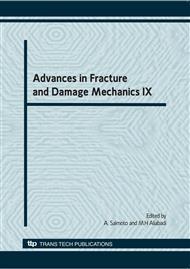p.205
p.209
p.213
p.217
p.221
p.225
p.229
p.233
p.237
The Failure Mechanism Analysis on a Reinforced Concrete Frame Structure in Beichuan County - The Heavy Disaster Areas of Wenchuan 8.0 Earthquake
Abstract:
On 12 May 2008, a magnitude 8.0 earthquake happened in Wenchuan, Sichuan province, China .It was the most serious earthquake in china since 1949, causing very huge casualties and engineering damages to the buildings. In the earthquake, a reinforced concrete frame structure of Beichuan Hotel in Beichuan County collapsed completely because of the unsuitable arrangement of column network, and the engineering damage was characteristic. In the paper, the properties of material nonlinearity were considered ,the nonlinear analysis model of reinforced concrete frame structure was established, the time history analysis and nonlinear static analysis were used during inelastic stage, the main cause of structural destruction was obtained, the influence of the arrangement of column network on the structure was discussed.Therefore ,the results can provide valuable reference for the seismic design of reinforced concrete frame structure.
Info:
Periodical:
Pages:
221-224
Citation:
Online since:
November 2010
Authors:
Price:
Сopyright:
© 2011 Trans Tech Publications Ltd. All Rights Reserved
Share:
Citation:


